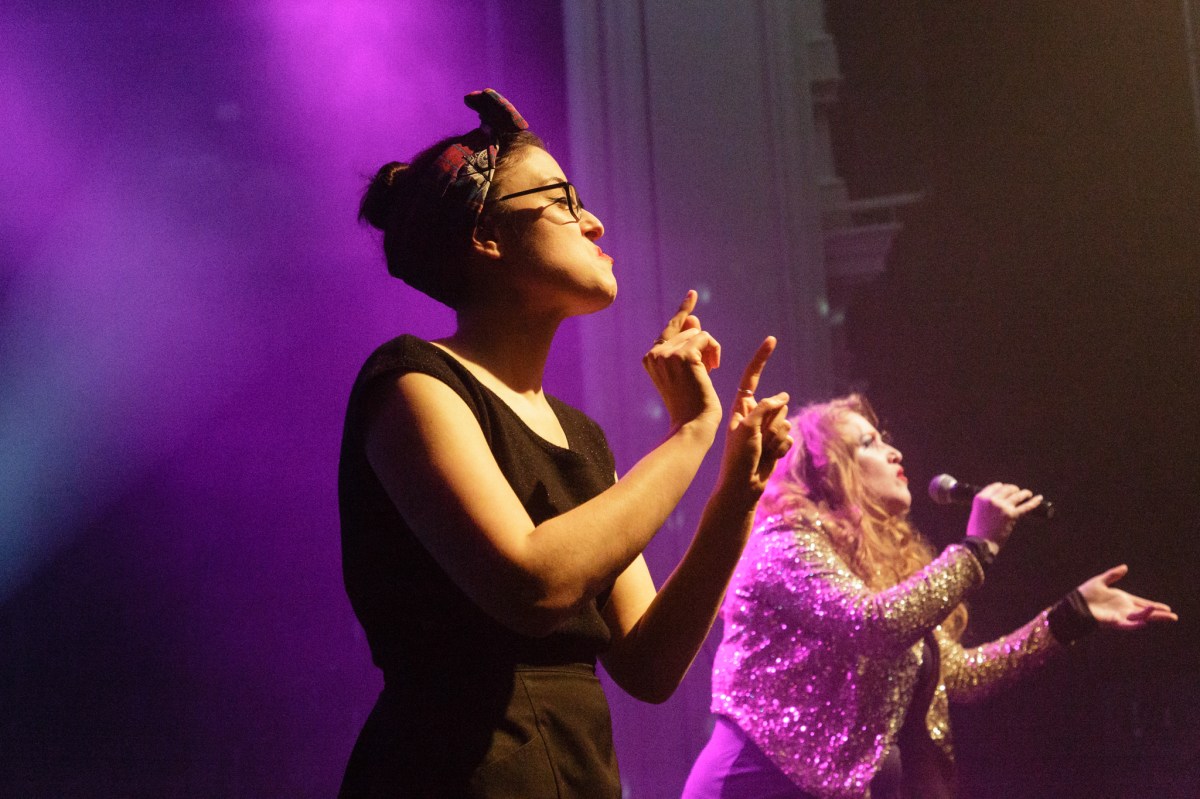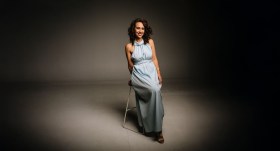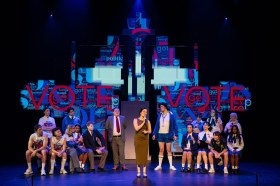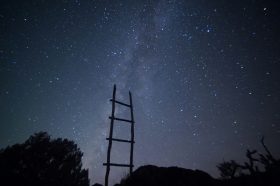3 December is International Day of People with Disability – or ‘Crip Christmas’ as some of us in the disability community like to call it. And there’s no better time to reflect on the incredible work of Deaf and disabled artists, and the accessibility and inclusivity of our sector more broadly.
Access and inclusion are words that are popping up more often – whether through funding body requirements, national conference panel discussions or more prominent Deaf and disabled programming at ‘mainstream’ events. But which arts organisations and artists are truly doing access and inclusion work well, and where can we look for great examples to learn from?
FRINGE FESTIVALS ARE SHOWING US THE WAY
Over recent years, Fringe Festivals internationally have been paving the way for what an accessible future could look like. As open access events, principles of access and inclusion are at their core.
Melbourne Fringe CEO Simon Abrahams says, ‘It feels important that we take a leadership position on something like accessibility because of our purpose. We enable participation no matter who you are.’[1]
International events such as Edinburgh Fringe have been working on improving not only physical access (a challenge in a city like Edinburgh) but also other access elements, such as making their festival more inclusive for people who are neurodiverse with initiatives such as their sensory backpacks.
In Australia, many of our Fringe Festivals are also deeply committed to accessibility, with Melbourne, Sydney, Adelaide and Perth Fringes either already employing or about to employ year-round Access Coordinators to help embed access and inclusion across their organisations.
In Melbourne, access and inclusion has grown from a small stand-alone program into an organisational culture. Access and Inclusion Coordinator Carly Findlay has championed change and staff have embraced the challenge of embedding accessibility across functions, reporting that is it now ‘simply part of what we do.’[2]
Our four major Fringe Festivals each have Disability Inclusion Action Plans and accessible websites. They have rolled up their sleeves and undergone training and consultation with the disability community, created ‘access champions’ across their staff, offered Access Awards, employed Deaf and disabled producers, supported artists to make shows accessible and worked with venues to make spaces more welcoming.
Despite resource constraints and the challenges of working across multiple venues they don’t control, these are DIY organisations that are just getting on with it. They are solving access issues creatively and finding no or low cost options to remove barriers.
Kerri Glasscock, CEO of Sydney Fringe summarises: “By their very nature Fringe ‘Festivals aim to be inclusive and accessible…It is our responsibility to remove as many barriers to entry as possible and to actively pursue true inclusiveness and accessibility.’[3]
ACCESS AND INCLUSION FOR FRINGE ARTISTS
Deaf and disabled artists are making some of the most exciting artistic content on the planet. As natural innovators, they are risk-takers, experimenters and boundary pushers in their everyday lives and this can translate artistically. Despite this, many access barriers exist which can hinder sustainable careers. Only 9% of Australian professional artists identify as Deaf or disabled (compared to 18% of the overall population) and they currently earn 42% less than their non-disabled counterparts.[4]
Fringe Festivals have provided a supportive home for many artists from all backgrounds. In a recent survey, 68% of Deaf and disabled artists said they felt welcome at Melbourne Fringe and 85% of them said that feel Melbourne Fringe is accessible and inclusive to all artists.
Thanks to more accessible artist registration processes, there’s also been a marked increase in the volume of Deaf and disabled Fringe artists, with Melbourne Fringe alone recording 440 such artist registrations since 2018. Caroline Bowditch, CEO of Arts Access Victoria says that this number is significant and ‘would be close to the level of involvement of Deaf and disabled artists at Edinburgh Fringe’.[5]
Fringe Festivals have been working to assist all artists make their work more accessible for a wide range of audiences. Sydney Fringe Programs Producer Charley Sanders says, ‘we hold dedicated masterclasses and professional development opportunities, helping artists to build skills in ensuring access and inclusion at their events and in their creative spaces.’
Melbourne Fringe has implemented mentoring and professional development programs, as well as microgrants to support Deaf and disabled artists. One in three of all 2020 Fringe artists sought advice from the Access Coordinator, as ‘artists were excited about the possibility of creating accessible shows, with many keen on making their shows accessible – and following through’.[6] They have also encouraged artists to embed aesthetic access into their works and have produced access guides and resources, such as their Producers Guide to Access, which have been widely used across the arts sector.
The support from Fringe Festivals, paired with the ‘can do’ attitude of many Fringe artists, has set the bar high for the rest of the industry. Caroline Bowditch reflects on this: ‘After doing Fringe, the artists might have high expectations…How do we bring other organisations on the journey with us – embedding the learnings and inviting others on that journey?’[7]
ACCESS AND INCLUSION FOR FRINGE AUDIENCES
The access achievements of Fringes and their artists are translating to more disabled audiences as well: 9% of Melbourne Fringe’s audience identified as Deaf and disabled, and Fringe Festivals across the country are implementing audience tools such as ‘language no barrier’, ‘Visual Ratings’ and ‘Aural ratings’ systems, to help audiences select works that will best meet their access needs.
The digital festivals that have been produced by several Fringes during COVID-19 have also helped to remove access, financial, social and geographic barriers for disabled audiences.
The 2020 digital Melbourne Fringe saw the number of accessible performances produced rise dramatically. Pauline Cady, Development and Evaluation Manager at Melbourne Fringe, said that ‘an enormous amount of works were accessible in 2020 in ways they couldn’t have been in real life’. Audience Outlook Monitor research highlights the important role that digital presentation is playing in broadening access.
While digital presentation doesn’t solve every access barrier, there is a strong desire from the disability community for digital arts events to continue in the future.[8]
LEADERSHIP ROLES IN THE SECTOR
By working ‘at the coalface’ directly with artists and venues, Fringe Festivals are playing key leadership roles and positively influencing artists and the arts sector more broadly.
Charley Sanders explains that, ‘Fringe organisations intrinsically affect arts and culture for years to come, because we are working with artists in the early phases of their practice – artists that come from Fringe go on to every part of the arts sector, and they take the culture that they learned and shaped with them when they do.’
Melbourne Fringe has been recognised as a ‘trailblazer’ in this field, with the impact of their work far-reaching. From their support for Deaf and disabled artists, to identifying gaps and conducting outreach activities, to building capacity internally and networking across the arts sector, this has all led to an accessible shift in the Victorian, and Australian, arts sector.
LOOKING TO THE FUTURE
While Fringe Festivals are recognised as places where audiences can see some of the best work by Deaf and disabled artists across the country, as well as examples of how to present work in an accessible and inclusive way, there is still more work to do.
Madeleine Stuart, comedian and Access Coordinator at Sydney Fringe, speaks of her dreams for the future: ‘We’re working on implementing our Disability Inclusion Action Plan to make sure that every interaction with Fringe – from our website, tour registration process, to every venue and rehearsal room – is as accessible as we can possibly make it.’
Melbourne Fringe recently announced their ‘Radical Access’ program, which will raise the bar for accessibility across the independent arts sector over the next decade.
Abrahams explains that, ‘The weight of expectations needs to change. We’ve seen this with First Nations. It’s unacceptable to launch a festival without significant, genuine First Nations engagement up front. This has not [yet] happened with Deaf and disabled artists.’
Thanks to organisations such as Fringe Festivals, across the next decade I hope that we will see more works with aesthetic access built in from the start, more accessible use of digital and tech, and a higher number of Deaf and disabled artists on our stages. It’s going to take further investment, more advocacy and energy – but it’s going to be brilliant!
Come and be a part of this cultural shift. Being accessible and inclusive doesn’t have to be hard or expensive – but it does require an open mind and commitment. We don’t always need to re-invent the wheel, as this is a space where people like to share. So take a leaf out of a Fringe Festival book and see how you can embed their tips and tricks into your own work. And Merry Crip Christmas everyone!
RESOURCES
Melbourne Fringe:
Accessibility page
Producers Guide to Access
Deaf and Disability Inclusion Action Plan
Evaluation of the Melbourne Fringe Access and Inclusion Program 2018-2020
Other festivals:
Sydney Fringe accessibility page
Adelaide Fringe Accessibility page
Fringe World (Perth) accessibility page
Edinburgh Fringe accessibility page
Audience Outlook Monitor Disability Fact Sheet
[1] Evaluation of the Melbourne Fringe Access and Inclusion Program 2018-2020, Patternmakers.
[2] Ibid.
[3] Morwenna Collett’s interview with Sydney Fringe, 1 December 2021.
[4] Making Art Work: An Economic Study of Professional Artists in Australia, The Australia Council for the Arts.
[5] Evaluation of the Melbourne Fringe Access and Inclusion Program 2018-2020, Patternmakers.
[6] Ibid.
[7] Evaluation of the Melbourne Fringe Access and Inclusion Program 2018-2020, Patternmakers.
[8] Disability Fact Sheet: Audience Outlook Monitor, The Patternmakers.





